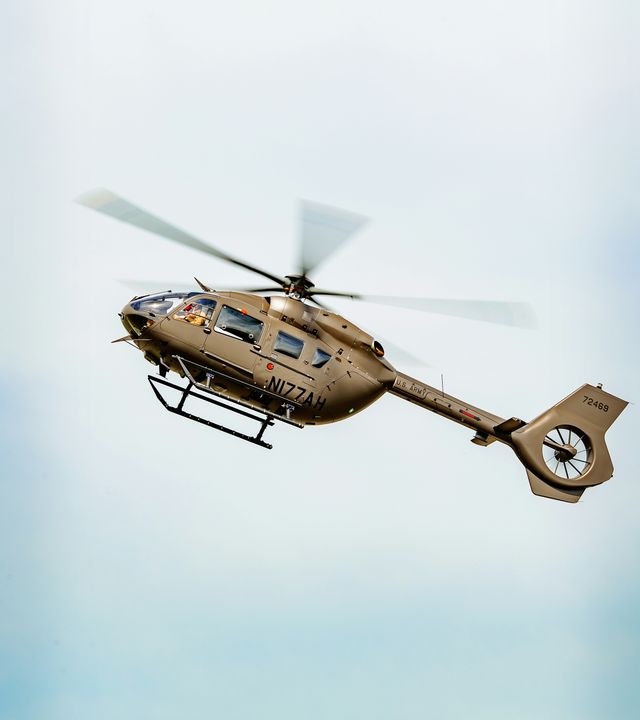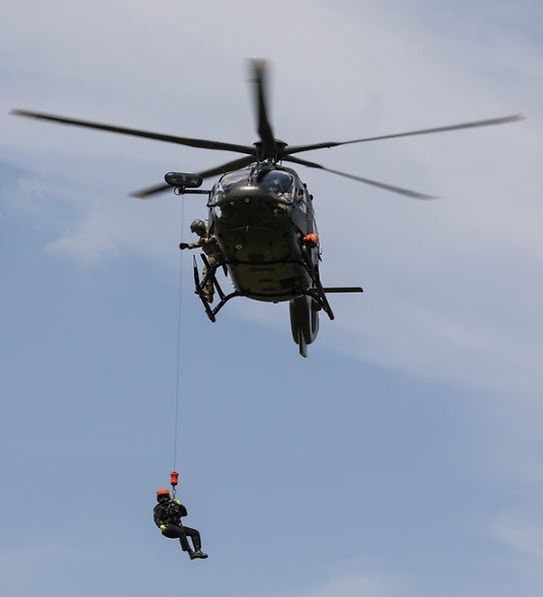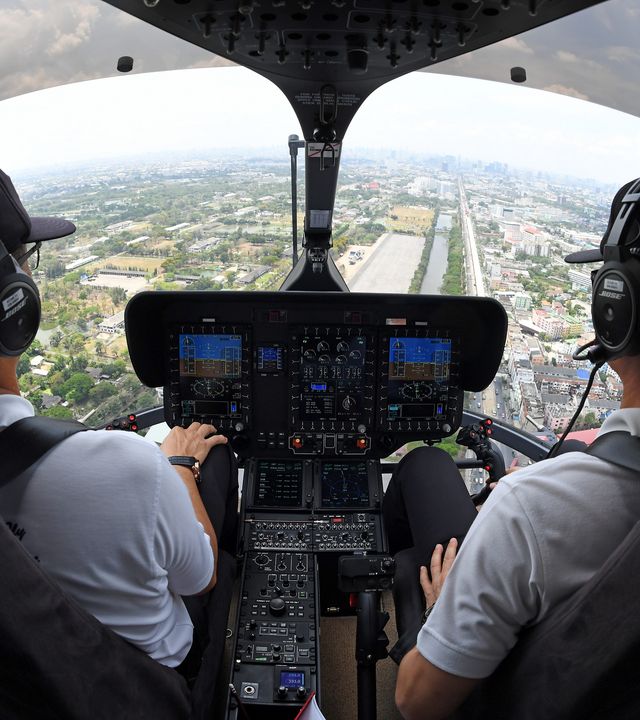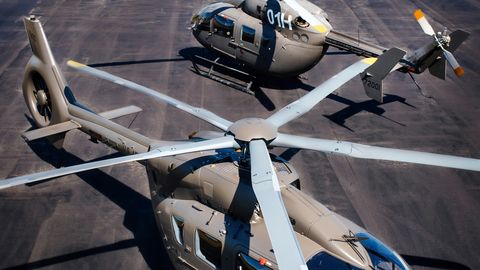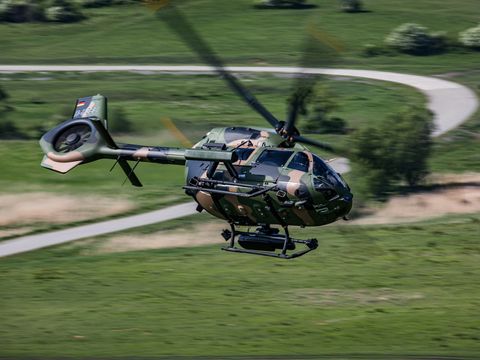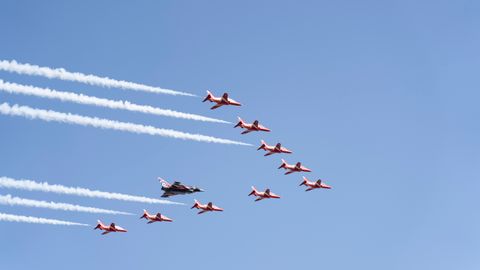Versatility at its best
Derived from the Airbus H145 family of helicopters, the UH-72 Lakota is a highly versatile and reconfigurable aircraft that can be tailored for a range of operations across a variety of conditions and environments.
The aircraft is manufactured in the US, with two variants currently performed by the U.S. Army and U.S. Navy: the UH-72A and UH-72B.
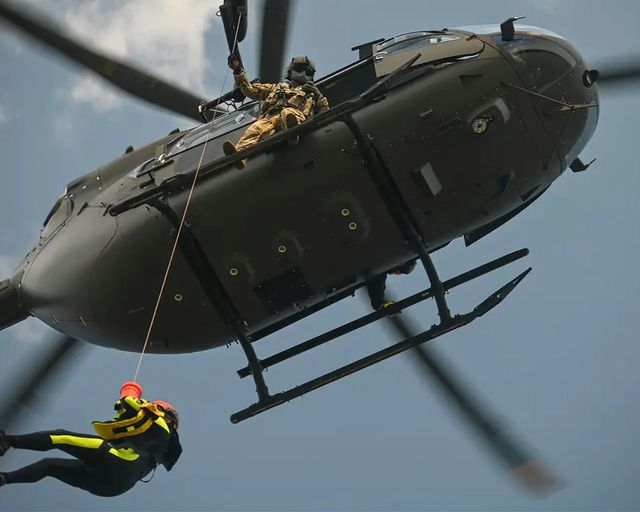
Made for the mission
The UH-72 Lakota’s missions are as varied as its operating locations, and include training, light attack, search and rescue, reconnaissance, MEDEVAC, disaster response, homeland defense, drug interdiction, command and control and VIP transport.
The UH-72 Lakota supports U.S. Army and U.S. Army National Guard units across 49 U.S. states and territories. The aircraft has recently surpassed 1.5 million flight hours across its Army, National Guard and U.S. Navy fleets.
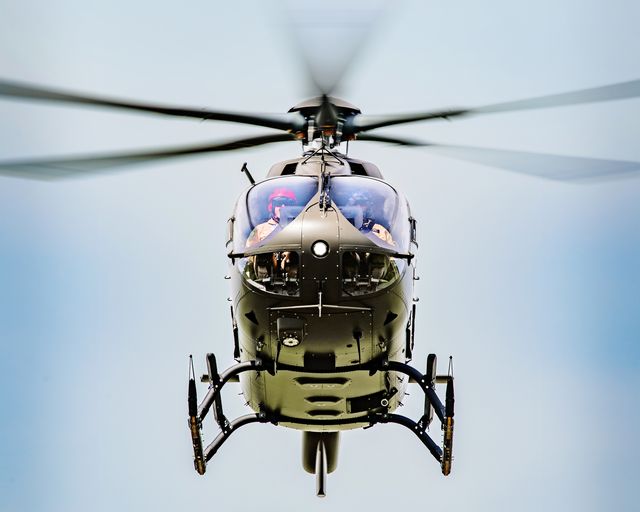
Ready on arrival
As a commercial off-the-shelf (COTS) program, the UH-72 platform delivers the advantages of proven production, commercial program improvements, sustained engineering, and capability growth without cost burdens associated with research, development and testing.
Incorporation of COTS technologies, combined with the UH-72's operational ability, result in an aircraft that is exceptionally simple and affordable to operate and maintain.
UH-72A
For nearly two decades, the UH-72A continues to serve as the backbone of helicopter fleets across U.S. military services. All Army aviators train on a UH-72A Lakota at the U.S. Army Aviation Center of Excellence at Fort Novosel. No other training aircraft in the Army fleet provides the same level of affordability, flexibility, and reliability, along with a seamless transition to advanced aircraft.
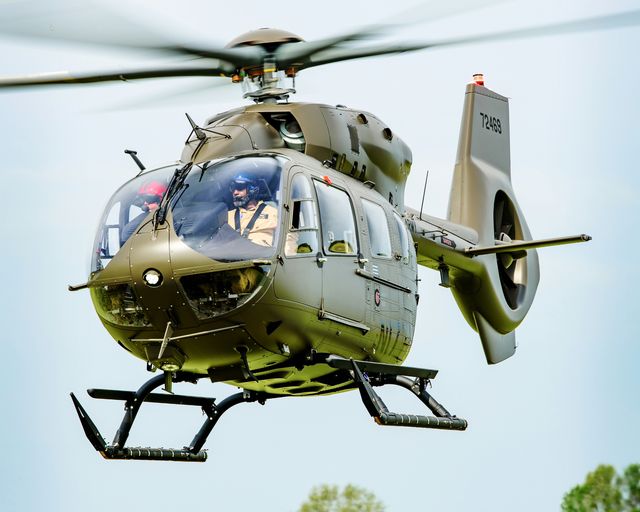
The U.S. military’s training partner
UH-72A
In 2015 the U.S. Army re-purposed the UH-72A Lakota to support and sustain the Initial Entry Rotary Wing – Training (IERW-T) mission at Fort Novosel. This role ensures all new U.S. Army Aviators receive initial rotary wing training, instrument procedures, warfighter skills, and emergency procedures prior to transitioning to their combat advanced aircraft. A twin-engine aircraft, the Lakota can function in modes that closely represent the flight characteristics of the ‘go-to-war’ advanced aircraft the graduate IERW student will operate.
Since becoming the primary trainer for the U.S. Army Aviation School’s training mission in 2020, the Lakota trains around 1,400 students annually and flies in excess of 125,000 flight hours. To date, the Lakota has trained more than 8,000 students and in this role accumulated over 800,000 flight hours.
The U.S. Army’s Combat Training Centers also employ the UH-72A as observer and controller and opposing force aircraft in support of their realistic combat and threat training scenarios for Joint and Combined Arms Forces.
The Army rotates more than 140,000 soldiers annually through its Combat Training Centers (CTCs). The CTCs are located at the National Training Center, Fort Irwin, CA; the Joint Readiness Training Center at Fort Johnson, LA and the Joint Multinational Readiness Center at Hohenfels, Germany. The CTCs are renowned for providing leaders at all levels effective training and skills to successfully fight and win our Nation’s wars.
In addition to the Army, the U.S. Navy Test Pilot School operates the UH-72A Lakota as its primary trainer for experimental and developmental flight test training at Naval Air Station Patuxent River, Maryland. Approximately 24 test pilots are trained annually to perform acquisition testing of future aircraft to meet the Navy’s operational needs.
UH-72B
The UH-72B Lakota, the latest addition to the successful UH-72 family, represents a significant advancement in rotary-wing technology.
Delivered to the U.S. Army in September 2021, the UH-72B incorporates numerous enhancements derived from the commercial aircraft's lifecycle, including improved power, controls, avionics, and safety features – all achieved at no additional cost to the government.
These enhancements position the UH-72B Lakota as a versatile and efficient asset for the U.S. Army, offering improved performance, safety, and operational capabilities.
The latest on the UH-72 Lakota
in the spotlight
-
 Stories Helicopters
Stories HelicoptersHurricane Helene relief efforts show the UH-72B Lakota is a force for good
Responding to the devastation left by Hurricane Helene in September 2024, the National Guard provided critical relief with the Airbus UH-72 Lakota. -
 Stories Helicopters
Stories HelicoptersThe Lakota: the all in one UAS
-
 Press releases Helicopters
Press releases HelicoptersU.S. Army awards Airbus contract for Continued Logistics Support
-
 Press releases Helicopters
Press releases HelicoptersU.S. Army National Guard to operate first UH-72B in Arizona
-
 Press releases Helicopters
Press releases HelicoptersAirbus Helicopters UH-72 Lakota fleet surpasses one million flight hours, with U.S…

